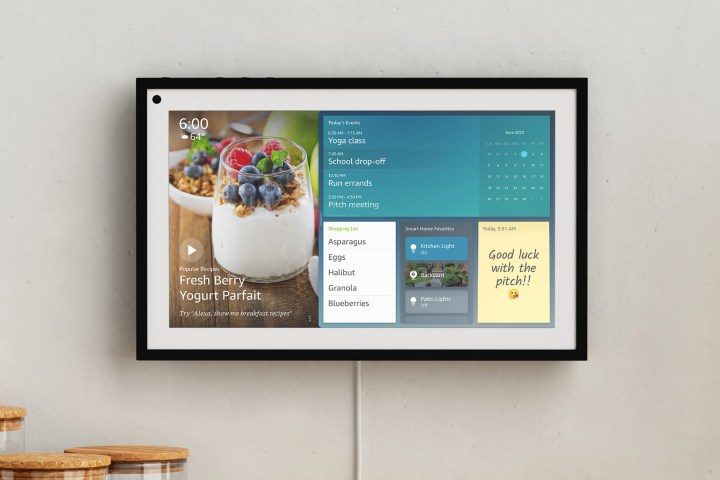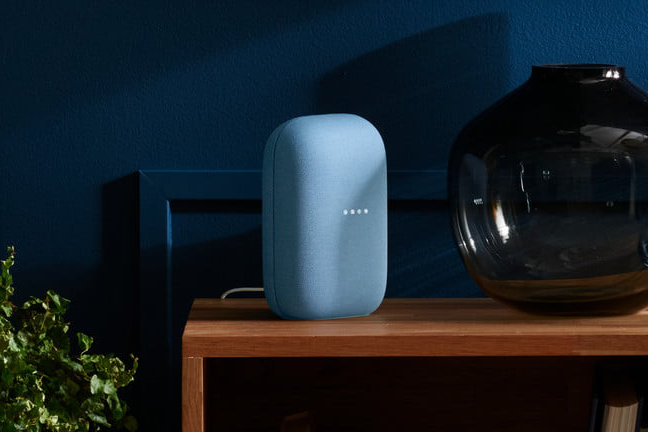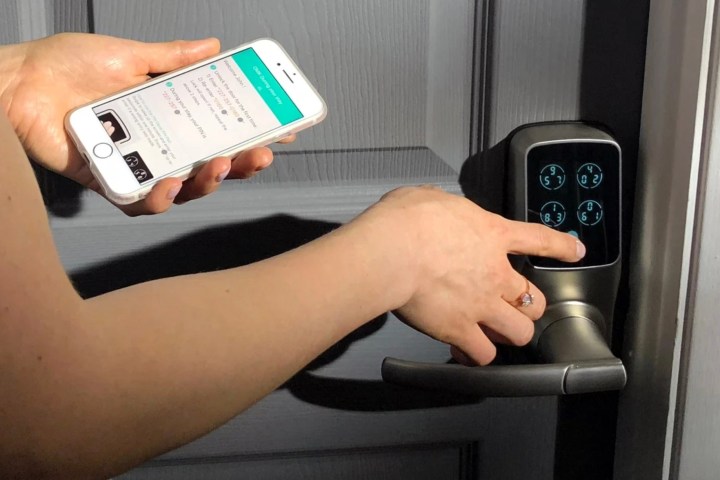When it comes to smart home automations, there really isn’t much that can’t be done these days. From the moment you wake in the morning to the final minutes before bed, by issuance of a few simple voice commands, you can check your daily schedule, raise and lower blinds, fire up a pot of coffee, stream news radio, lock and unlock doors, initiate a video call, and so much more.
- The Internet of Things and ecosystems
- Why does your smart home need your Wi-Fi?
- The downside of relying on Wi-Fi for your smart tech
- Increased security for you and yours
- Functionality when we need and want it most
- Expansions for existing technologies
- A mixed bag of initial affordability and performance
- Relish the present, hope for the future
And as product developers are continuing to roll out new and innovative features, today’s leading smart home devices are getting easier to use, more efficient, and — you guessed it — smarter. With innovation around every turn, what could possibly be improved upon?
Our hot take: The reliance on our Wi-Fi networks to operate this equipment.
The Internet of Things and ecosystems
The vast majority of smart home devices require a web connection, which is why this class of consumer tech and its related peripherals are often referred to as Internet of Things (IoT) components. While this label can be applied to essentially any hardware that has the capability of connecting to the internet, the phrase takes on a new meaning when discussing smart devices.

This is because smart home hubs, such as Amazon’s Alexa-powered Echo or Google’s Nest Audio speaker, allow us to build, manage, and customize our own “ecosystems.” Housed underneath the IoT umbrella, a smart home ecosystem refers to the family of web-connected gear that your smart hub (or host device) is capable of controlling.
In the case of something like Amazon’s Alexa, hub controls also extend to other common hardware used to manage and operate smart devices (think phones, tablets, and laptops).
Famously compatible with thousands of third-party devices, Amazon’s Echo speaker can use Alexa to control everything from smart locks and cameras to lights and refrigerators.
All of this hardware is enabled and linked together (with the Echo as the leader and other devices as the followers) through the internet, which is where we get the IoT designation. The A-to-B handshaking between your Echo speaker and your smart locks and lights is also what is referred to as the ecosystem.
Why does your smart home need your Wi-Fi?
Our smart devices, particularly our smart home hubs, are powered by some pretty impressive technology. Using a process called cloud processing, voice assistants like Alexa and Google Assistant are able to take in our commands (spoken or via app), process what we’ve asked or instructed by communicating with an external server, and then deliver a result through the appropriate channel.
In the case of a simple question (“OK, Google, when did The Shawshank Redemption come out?”), Google Assistant will use the Google search engine (the appropriate channel) to provide an answer.
For a command like “Alexa, lower the lights by 50%,” the Echo Dot communicates with your smart lights (the appropriate channel) in order to dim down the living room.
Cloud processing is also used by our smart devices to do things like memorize our voices, recognize our faces, and make product suggestions.
In order for cloud processing to take place, smart home devices need an internet connection to communicate with the many offsite servers (“the cloud”) that act as the brains for tools like Alexa and Siri.
When developing IoT hardware, smart device companies can bank on most residences and businesses having Wi-Fi to power their tech. While other wireless protocols like Bluetooth Low Energy and Zigbee (more on Bluetooth later) are great alternatives to Wi-Fi, it’s generally smarter for the developer to design its products around the protocol that most consumers will be actively using.
Additionally, product developers are always rolling out changes and improvements to web-connected devices through firmware and software updates. These updates rely on a web connection in order to manually or automatically download the update itself.
The downside of relying on Wi-Fi for your smart tech

Wi-Fi is a gold standard for smart home tech, allowing for mostly smooth operation of components, both for onsite and offsite processing. But here’s the rub: A number of smart devices won’t perform even the most basic commands without a web connection.
Own a smart speaker or display? Without a web connection, these devices are basically moot. Sure, you’ll be able to stream music using Bluetooth, or by hardwiring your phone directly to the device, but the idea behind smart speakers and screens is easy and convenient content access and automations.
When it comes to a simple command like remotely locking or unlocking a smart door lock, it’s a little ridiculous to think that if your lock isn’t connected to the internet, you won’t be able to unlock your device through its companion app (or compatible hub app).
While we’re aware that other wireless standards like Bluetooth are used alongside Wi-Fi, a web connection is the dominant gateway between your smart device and everything it can do.
Thus, we’d like to propose something rather drastic: Smart home developers should start designing products that require zero internet connection.
Here’s a breakdown of what we think web-less operation can improve, as well as a few hurdles we anticipate for an age where the world of IoT may be no more.
Increased security for you and yours
As mentioned in the above cloud processing explanation, smart device commands are typically handled externally before the actual processed result is delivered to your ecosystem. But even devices that are handling processes locally (without connecting to the cloud) are sometimes doing so through the power of your internet connection, which makes it wired or broadcasted bandwidth that is still prone to hacking.
Hacking is a significant issue for any and all web-connected devices, with the most skilled intruders possessing the ability to access personal data, photos, videos, documents, and even live camera feeds. And even with some of the toughest web encryptions in place, an ultra-dedicated hacker will inevitably find a way in.
If smart product developers moved away from internet-powered hardware, companies would be removing one of the riskiest pathways between your user data and a hacker’s prying eyes.
Functionality when we need and want it most
Imagine outfitting your camper or boat with smart devices, but needing mobile data to keep this equipment operational. While it’s smart for frequent travelers to be paying for some kind of mobile data hub for a cellular web connection on the go, this isn’t a peripheral that everyone should have to rely on.
There’s also the simple fact that not every smart device is going to play nicely with a mobile hub. Even for those that do, your device’s performance is going to be hindered by how much data your hub is able to pull in geographically — which can be a real pain for our seafaring readership.
The same goes for those bloated community networks that you’ll sometimes find at RV campgrounds. Considering the amount of families that are tethered to those often password-less connections, you’ll be lucky to get an Echo Dot to even tell you the time of day. And consider the security risk of wide-open Wi-Fi!
Allowing smart devices to process more commands locally will allow essential on/off commands for locks, lights, and cameras to function where we need these features most. Because let’s face it: Who wants to be in an unfamiliar zip code without the ability to check a live camera feed (either of the RV or your home) or ask Alexa to contact emergency services?
Expansions for existing technologies

Spending time on figuring out how to get equipment to operate without Wi-Fi could lead to more ingenuity in developing existing technologies to accommodate Wi-Fi-less products.
For example, let’s say Amazon had to wake up tomorrow and figure out how to make Echo products work without an internet connection.
Well, the first thing it would probably do is try and somehow make Amazon Sidewalk as far-reaching and comprehensive as possible.
An existing community networking tool that utilizes Bluetooth Low Energy (BLE) and 900MHz radio frequencies, the idea behind Amazon Sidewalk is to give smart devices a safety net to operate from in the event of a neighborhood internet outage, and to give a big boost in performance to areas where the web connection isn’t so strong.
Let’s say Amazon was spending more time developing the extent of Sidewalk’s BLE capabilities: What if developers figured out a way to tap into the Bluetooth on our phones that would turn our mobile devices into roaming and reliable gateways for smart products?
Sure, our phones can do things like allow us to remotely unlock our doors when we’re in range, but other companion app features, like checking the lock’s history and creating guest entry-codes, usually require Wi-Fi.
What if these extra abilities could be accessed using exclusively Bluetooth, or a new type of wireless standard altogether?
A mixed bag of initial affordability and performance
Imagine that the first wave of completely Wi-Fi-less smart products hit shelves tomorrow, and one of the first items you can buy is an Echo speaker that combines some kind of mobile data processing with Amazon Sidewalk’s BLE and 900MHz capabilities.

Well, we’re guessing that even though the design and engineering of this new Echo negates the need for typical networking peripherals (which means cheaper production for the manufacturer), the inclusion of a new mobile data chip may cost the consumer more upfront, or even monthly, if you’ll have to pay for the data as you would for traditional cellular data.
Furthermore, we’re assuming there’s going to be plenty of glitches to work out during the first generation. So while it might be awesome to be able to take your Echo on the go, maybe certain streaming services will run a bit slower than normal, or perhaps Alexa has a hard time handling web searches depending on what part of the country you’re in.
Or worst of all: Let’s say the hackers of tomorrow discover a way to compromise Amazon Sidewalk or Amazon’s new roaming-data capabilities.
Wi-Fi has been around far longer than any kind of new and experimental wireless networking, which means it may take Amazon developers longer to figure out how to beef up security measures to stop those pesky malcontents in their digital tracks.
Relish the present, hope for the future
As it stands, smart devices requiring an internet connection is going to remain the norm for at least the foreseeable future — and for a number of good reasons. After all, the internet is easy to design products around, relatively simple to troubleshoot when something goes awry (both locally and externally), and widely accessible when it’s time to roll out improvements (those glorious firmware updates).
But this isn’t to say that we shouldn’t start to prepare for a world where the latest smart technology can perform basic and even more advanced functions using an upgraded form of an existing wireless protocol or something totally new and revolutionary.



